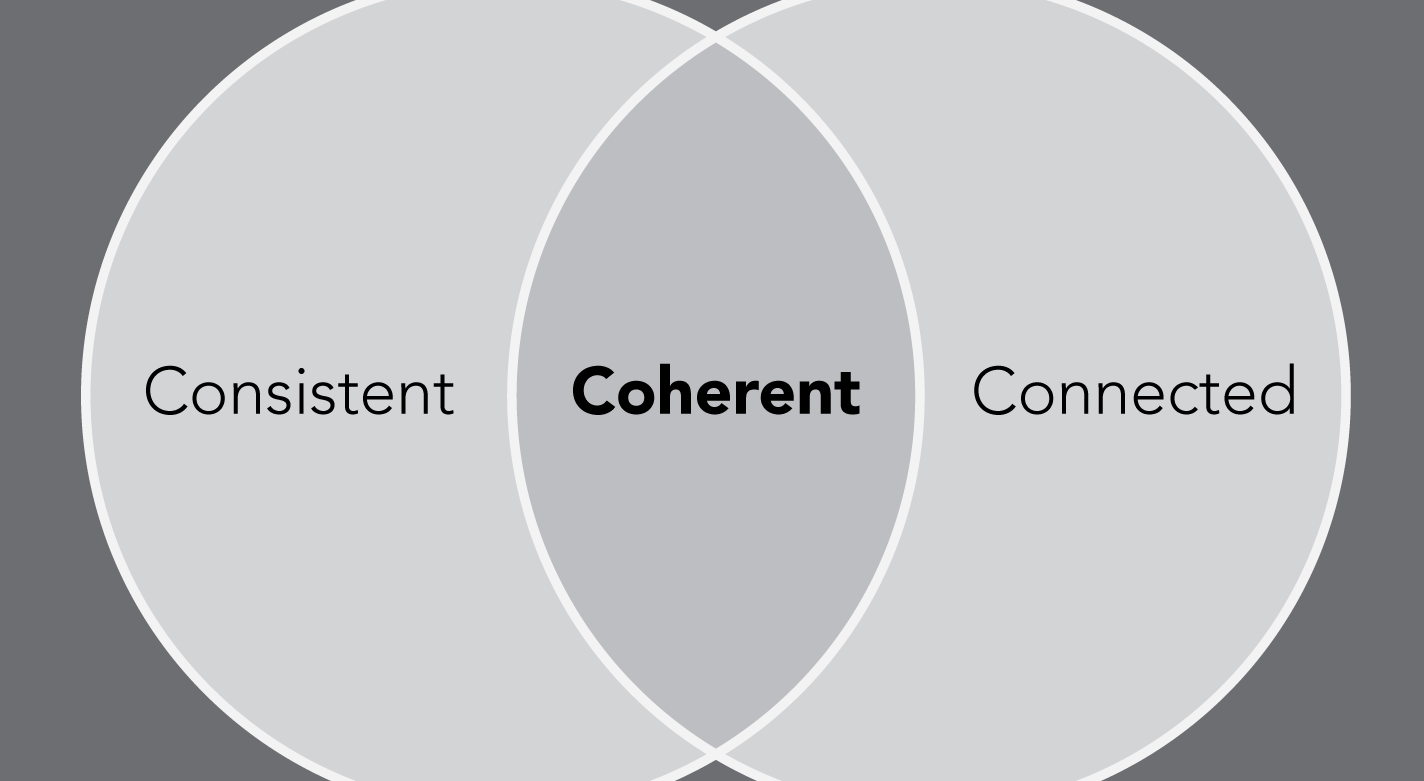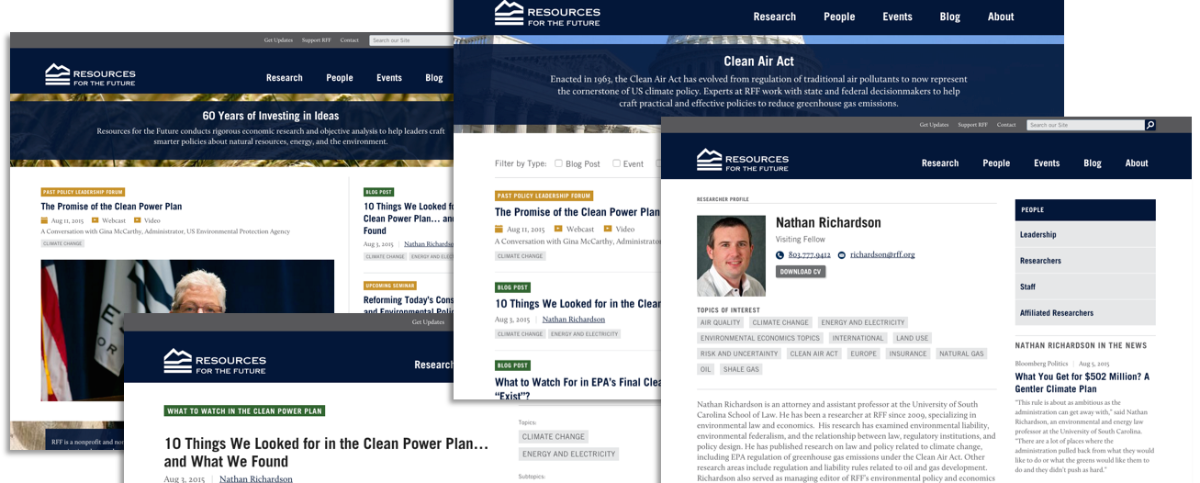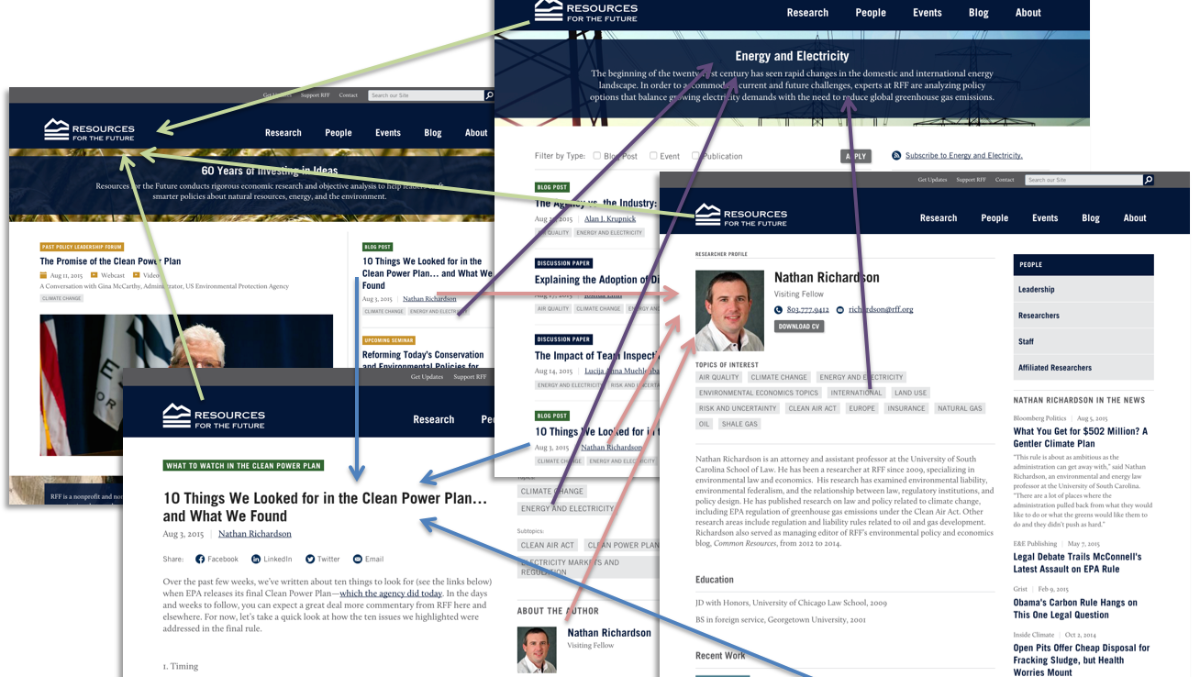Key Points
- To be coherent, a web presence, intranet, or extranet needs to be consistent and connected.
- Evaluate your web presence coherence BROADLY, to include all your websites.
- To get to coherence, you need internal agreement way before talking with implementation partners
From small sites to global web presences with a large number of websites worldwide, coherence is always a struggle. To be coherent, a web presence must be both consistent and connected.

Remember, we are talking about your ENTIRE web presence
Perhaps the biggest mistake teams make is forgetting that your visitors see your entire digital presence as the digital face of your organization. They do not care at all about the fact that one team might run one part of the site and another team runs their site in a totally different way
Put another way, don't just concentrate on the parts of the web presence that are in your total control (perhaps I shouldn't be, but I remain surprised how often teams overlook a huge issue with the overall web presence because "we don't consider that part of the web" or whatever). Consider how consistent and connected your entire web presence is.
Consistent
Consistency is perhaps the most straightforward element to see and for everyone to understand. The RFF.org website is an example where the homepage, topic pages, article pages, and bio pages are all very consistent:

+ Connected = Coherent
Being consistent and then adding connections across the site leads to coherence. Again using the RFF.org as an example, we see that the major types of pages are linking to and form each other:

Getting to coherence: agreement way before talking with implementation partners
Coherence isn't easy. Incoherence is very easy to perpetuate, either by creating yet another site (making incoherence worse) or by just redesigning one site (perhaps even if it's your main site) in your web presence.
This is why it is very important to get buy-in well before talking with potential implementation partners about how much you will try to rein in incoherence, if at all.
Continuing with the RFF.org example, the original web presence was pretty incoherent (for example, each center having its own navigation within the main site and the blog site being completely disjointed from the main site). But bringing this under control required top management buy-in. I ran a workshop with the president of RFF and the rest of the top management team to: a) explain the coherence problem (including why it is a problem), b) describe different approaches, and c) work together to make a decision on the approach. Their decision for more coherence rippled through to the RFP and implementation.